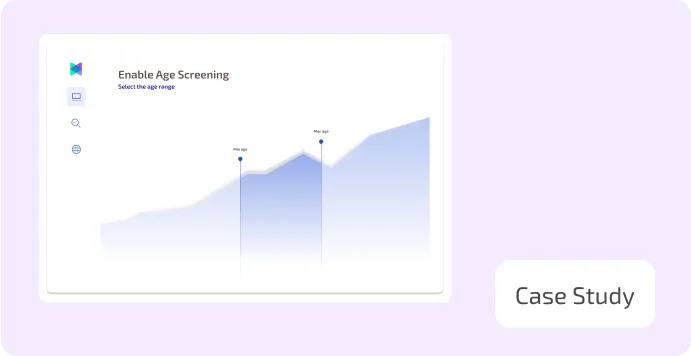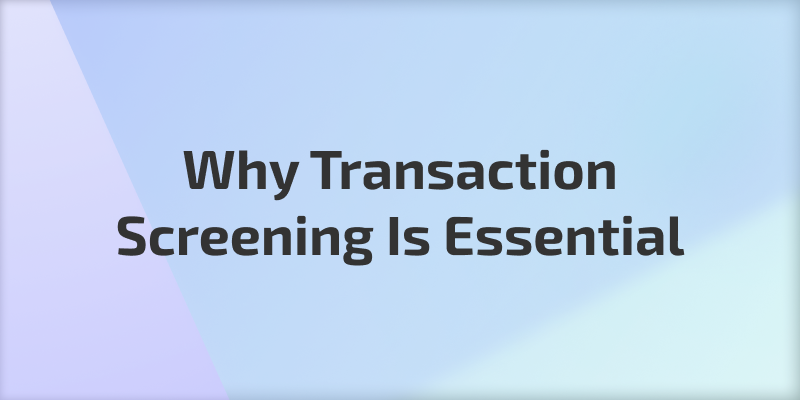.webp)
Published on
July 10, 2025
Check Fraud: Common Types, Examples, and Prevention Tips
In this story

Comply quickly with local/global regulations with 80% less setup time
.svg)
.svg)
Despite the global transition toward digital finance, check fraud remains a resilient and fast-adapting financial crime. In fact, data from the U.S. Department of the Treasury’s FinCEN reveals a staggering surge: financial institutions submitted over 680,000 Suspicious Activity Reports (SARs) for suspected check fraud in 2022, more than doubling the previous year’s figure.
This trend underscores the urgent need for proactive mitigation and strategic intelligence gathering across the financial sector. Understanding the definition of check fraud is foundational for ensuring consistent classification, reporting, and prosecution. It also guides compliance teams in framing internal policies that address both isolated incidents and large-scale fraud operations.
What is Check Fraud and How is It Investigated?
Check fraud is a deceptive practice involving the unlawful use, alteration, or creation of checks to illegally obtain funds.
At its core, the question of what is check fraud and how is it investigated involves understanding both the mechanics of the crime and the regulatory frameworks that respond to it. Financial institutions rely on a combination of AML controls, fraud detection systems, and manual reviews to flag anomalies and uncover patterns consistent with fraudulent activity.
Once potential fraud is detected, investigative processes are activated, often involving law enforcement agencies such as the FBI, the U.S. Secret Service, or the U.S. Postal Inspection Service. In the GCC region, authorities such as the Cybercrime Departments under Ministries of Interior, financial intelligence units (FIUs), and central bank regulatory arms play a key role in fraud investigations and enforcement. For example, the UAE’s Cybercrime Law and Saudi Arabia’s Anti-Cyber Crime Law empower officials to pursue digital fraud cases proactively.
These investigations can reveal a wide range of tactics, from mail theft and identity fraud to the use of stolen or altered checks within broader criminal schemes.
How Check Fraud Schemes Work
The process may begin with check theft, either from a mailbox, business premises, or compromised printing system, followed by alteration or replication. Fraudsters then exploit deposit methods, often through ATMs, mobile apps, or mule accounts, timing their actions to avoid detection during check clearing windows. In advanced schemes, multiple parties are used to obscure the trail, making identification and recovery more difficult.
Read more: Anti-Money Laundering in Iraq: Regulations, Best Practices
The Tools and Tactics Behind a Typical Scheme
- One prevalent tactic involves "washing" checks, removing original ink using solvents and rewriting them with inflated amounts and new payee details. A washed check example might involve a legitimate $85 utility payment altered to a $3,000 withdrawal to a shell company. This practice continues to rise due to its relative ease and the delay between deposit and verification.
- Another method is check kiting, where individuals exploit the float time between two bank accounts at different institutions. By writing checks from one account with insufficient funds and covering them with checks from another, fraudsters create an illusion of liquidity. This manipulation can spiral into check kiting examples that cause six- or seven-figure losses before institutions realize the deception.
These schemes often overlap with forging checks, which includes unauthorized signatures or endorsements on stolen or blank checks. Each of these methods reflects a nuanced understanding of banking systems, knowledge that is increasingly shared among criminal networks.
Comply quickly with local/global regulations with 80% less setup time
.svg)
.svg)
6 Common Types of Check Fraud
Different types of check fraud present unique challenges for banks and investigators, making it crucial to distinguish between them for effective detection and prevention.
Among the most common forms are:
- Forgery of Checks: This involves illegally signing someone else’s name or altering existing check details such as payee or amount, effectively redirecting funds without authorization.
- Counterfeit Check Production: Criminals fabricate entirely fake checks designed to imitate legitimate financial instruments, often using high-quality printing techniques to deceive even seasoned personnel.
- Altered Checks: Here, authentic checks are tampered with; fraudsters change amounts or recipient names, typically by washing away ink or digitally modifying scanned images.
- Check Kiting Schemes: These are complex frauds exploiting the lag time between deposits and clearance across multiple bank accounts, creating artificial funds and temporarily inflating balances.
- Theft of Physical Checks: Stolen checks from mailboxes, offices, or homes are exploited by perpetrators to commit fraud through unauthorized cashing or depositing.
- Internal Check Tampering: Employees with access to company accounts may manipulate or create fraudulent checks for personal gain, a form of occupational fraud.
Read more: Anti-Money Laundering in Jordan: An Overview of Laws & Penalties
Real-World Check Fraud Examples
Although people are using checks less often, check fraud has increased by about 12% (Check fraud saw the largest year-over-year increase in 2023). Let’s explore the following examples:
- Between 2004 and 2006, Jeff Woodward, a Texas businessman, ran an illegal check kiting scheme. He used four bank accounts connected to his motorsports and car dealership businesses. Every day, he or his staff deposited bad checks into some accounts and withdrew money from others. Woodward signed about half of the checks, while his employees signed the rest. The total amount of these fake checks was $114 million, causing the banks to lose about $1.6 million. Eventually, Woodward was sentenced to four years in federal prison, followed by five years of supervised release, and ordered to pay $2.5 million in restitution.
- Meshach Samuels, a 26-year-old convicted felon from Orange County, pleaded guilty to leading a $1.2 million check fraud scheme and illegally possessing firearms. Using Instagram and Telegram, Samuels instructed followers—often for a fee—on how to commit bank fraud by depositing fake checks created with stolen account data, often supplied by a corrupt bank employee.
To avoid detection, his co-conspirators made cash withdrawals under $10,000. The scheme caused at least $400,000 in losses. Samuels also admitted to defrauding California’s Employment Development Department (EDD) by filing fake pandemic unemployment claims using stolen identities, resulting in over $14,000 in losses. Additionally, he was found in possession of multiple firearms despite felony convictions. He faces up to 50 years in prison. His former girlfriend, Sasha Jimenez, also pleaded guilty for her role in the EDD fraud, which led to $2.3 million in losses.
Investigating Check Fraud: How Banks and Authorities Uncover the Truth
When check fraud is suspected, the first step is usually taken by the bank. A customer might report an issue, or an internal alert could flag unusual activity. For example, if someone deposits several checks and withdraws the money quickly, it may signal a scam, especially if the checks bounce later.
Fraud teams within the bank review account activity, compare it with normal behavior, and look for warning signs like altered check images, duplicate deposits, or use of stolen checkbooks. These early checks help determine whether it's an isolated mistake or part of a larger pattern.
Read more: The Top 10 AML Red Flags: Safeguard Your Business from Crime
What Tools Are Used to Investigate
Banks use many tools to investigate check fraud cases and If a case looks serious, the bank may bring in law enforcement:
- Image analysis: Systems review scanned check images for signs of tampering, such as erased payee names or changed amounts, common in washed check examples.
- Behavior tracking: Software checks for activity that doesn’t fit a customer’s usual habits, such as cashing checks from unfamiliar sources or using multiple new accounts.
Read more: Gift Card Fraud Prevention: Types, Examples & Detection
Bank Responsibilities and Customer Protection
Banks are required by law and regulation to investigate fraud reports, secure customer funds, and report serious fraud cases. When customers become check fraud victims, banks must review the case, freeze affected accounts, and help reverse unauthorized transactions.
However, customers also have responsibilities. If someone delays reporting a fraudulent check, the bank may not be able to refund all the losses. That’s why it's important to monitor accounts regularly and report problems quickly.
How to Detect and Prevent Check Fraud
Banks can spot check fraud by watching for:
- Unusual deposit patterns (e.g. high-value checks into new accounts)
- Rapid withdrawals after check deposits
- Inconsistent check details (e.g. altered payee names, mismatched handwriting)
- Duplicate check deposits
1. Detection Tools
To identify fraudulent checks, financial institutions rely on:
- Check scanning software which spots altered or forged checks
- Behavioral monitoring systems which flag suspicious customer activity
- Positive pay services which match issued checks with those presented
- Mobile deposit verification which reduces fake check submissions
2. Internal Controls
Preventive actions banks should implement:
- Train staff to detect check fraud patterns and fraud checks
- Use multi-step approvals for large check processing
- Separate duties for check handling, posting, and auditing
- Monitor high-risk customers/accounts
3. Customer Partnership
Educate clients to:
- Secure checkbooks
- Use anti-fraud check designs
- Review statements regularly
- Report suspected fraudulent check activity immediately
Conclusion
Check fraud poses ongoing risks to banks and their customers. Knowing how it works and recognizing common types is key to stopping it early. Investigations and laws help hold fraudsters accountable.
Financial institutions must use technology, strong controls, and trained staff to catch fraud fast. Educating customers also reduces risks. Staying alert and prepared is the best way to protect against check fraud and keep the financial system secure.
FAQs: Check Fraud
Q1. What is check fraud according to the law?
From a statutory standpoint, what is check fraud is defined by various state and federal codes as the intentional act of producing, modifying, or presenting a check with the intent to deceive and obtain funds unlawfully.
This includes acts such as check kiting, forging a drawer’s signature, or cashing stolen instruments. While some cases involve individual opportunists, many schemes are orchestrated by organized networks exploiting systemic weaknesses across institutions.
Q2. What should I do if I'm the victim of check fraud?
If you find out you’ve been targeted by check fraud, the first step is to contact your bank right away. Let the authorities know by filing a report with the police or fraud prevention agencies. Keep all related paperwork handy, and keep a close eye on your accounts to catch any other unusual activity.
Q3. Is check fraud a federal crime and when is it considered a felony?
Across many countries, check fraud is regarded as a grave offense, especially when it involves large sums, multiple incidents, or is part of a coordinated criminal operation. Although laws and punishments differ globally, serious instances of check fraud are often classified as felonies or comparable serious crimes. These carry heavy penalties such as jail time and substantial fines. Lesser cases, like minor or first-time offenses, may be treated as misdemeanors, but deliberate and extensive fraud typically faces strict legal action due to the harm it causes to banks and individuals.
Comply quickly with local/global regulations with 80% less setup time
.svg)
.svg)

How Aseel reduced onboarding time by more than 87% using FOCAL
Learn how FOCAL empowered Aseel to achieve new milestones.
.svg)
.svg)
Mastering Fraud Prevention: A Comprehensive Guide for KSA and MENA Businesses
51% of organizations fell victim to fraud in the last two years, don't be caught off guard, act proactively.
.svg)
.svg)
Featured blog posts
AI-Driven Precision in Fraud Risk and AML Compliance
.svg)
.svg)

.svg)
.png)




.svg)


.webp)


.webp)
.webp)


.svg)

_FastestImplementation_Small-Business_GoLiveTime.png)

_HighPerformer_Small-Business_HighPerformer.png)
_Leader_Leader.png)



%20(1).webp)